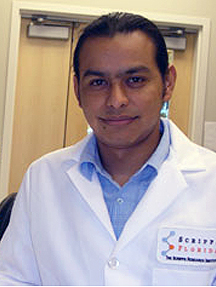Scientists Show Positive Memories Linger Longer
By Eric Sauter
If you believe positive reinforcement works better than the negative kind, a new study by scientists from the Florida campus of The Scripps Research Institute backs up your beliefs—at least in regard to fruit fly memory formation.
In a new study published in the July 10, 2012 print edition of the journal Current Biology, Scripps Florida scientists were able to show that when it comes to learning and memory in the common fruit fly (Drosophila), positive reinforcement—in this case, sucrose—results in the formation of a memory trace that lasts twice as long as aversive or negative reinforcement.
Even more remarkable, the flies in the study were able to distinguish between non-nutritive sugars and sucrose, which offers both sweetness and nutrient value—in other words, seemingly unlike most humans, the flies were able to distinguish between good calories and empty ones and hold it in their memory.
The memories formed in flies that were given the non-nutritive sugar decayed within 24-hours—similar, in fact, to those that received the negative reinforcement.
“One of the intriguing things we learned in this study is that there is a molecular nutrient sensor telling the fly that sucrose is good for them,” said Ron Davis, Scripps Research professor and chairman of the Department of Neuroscience, who co-authored the study with Isaac Cervantes-Sandoval, a research associate in his lab. “When this sensor says this is a nutrient capable of supporting life, that information somehow enters the memory circuits and makes it stick.”
The persistence of this nutrient memory is impressive, Davis pointed out. While the memory of a single training trial with negative conditioning decays over one day, a single trial using positive nutritious conditioning forms a stable, long-term memory, lasting as long as four days.
There is also a molecular fingerprint in the brain that distinguishes the memories formed from this nutritious reinforcement. “We can see and measure this fingerprint using sophisticated imaging techniques and have located the memory to what are known as the dorsal paired medial neurons or DPM neurons,” Davis said. After being fed the nutritious sucrose, the fingerprint for memories of nutrient sugars are found on both of two branches of the DPM neurons, while the fingerprint for memories of non-nutrient or negative reinforcement is confined to only one.
The fingerprint for nutrient memories lasts twice as long as the others, so “it’s both a qualitative and a quantitative difference between the positive and negative memory traces, which is significant,” Davis said.
Davis now wants to know about the sensor that tells the flies what’s good for them and what isn’t. “What is the sensor and where is it located? How does that information enter into the circuitry of learning and memory? That’s where we want to go next,” he said.
The study, “Distinct Traces for Appetitive versus Aversive Olfactory Memories in DPM Neurons of Drosophila,” was funded by the National Institutes of Health. See http://www.cell.com/current-biology/abstract/S0960-9822(12)00530-1?switch=standard
Send comments to: press[at]scripps.edu















